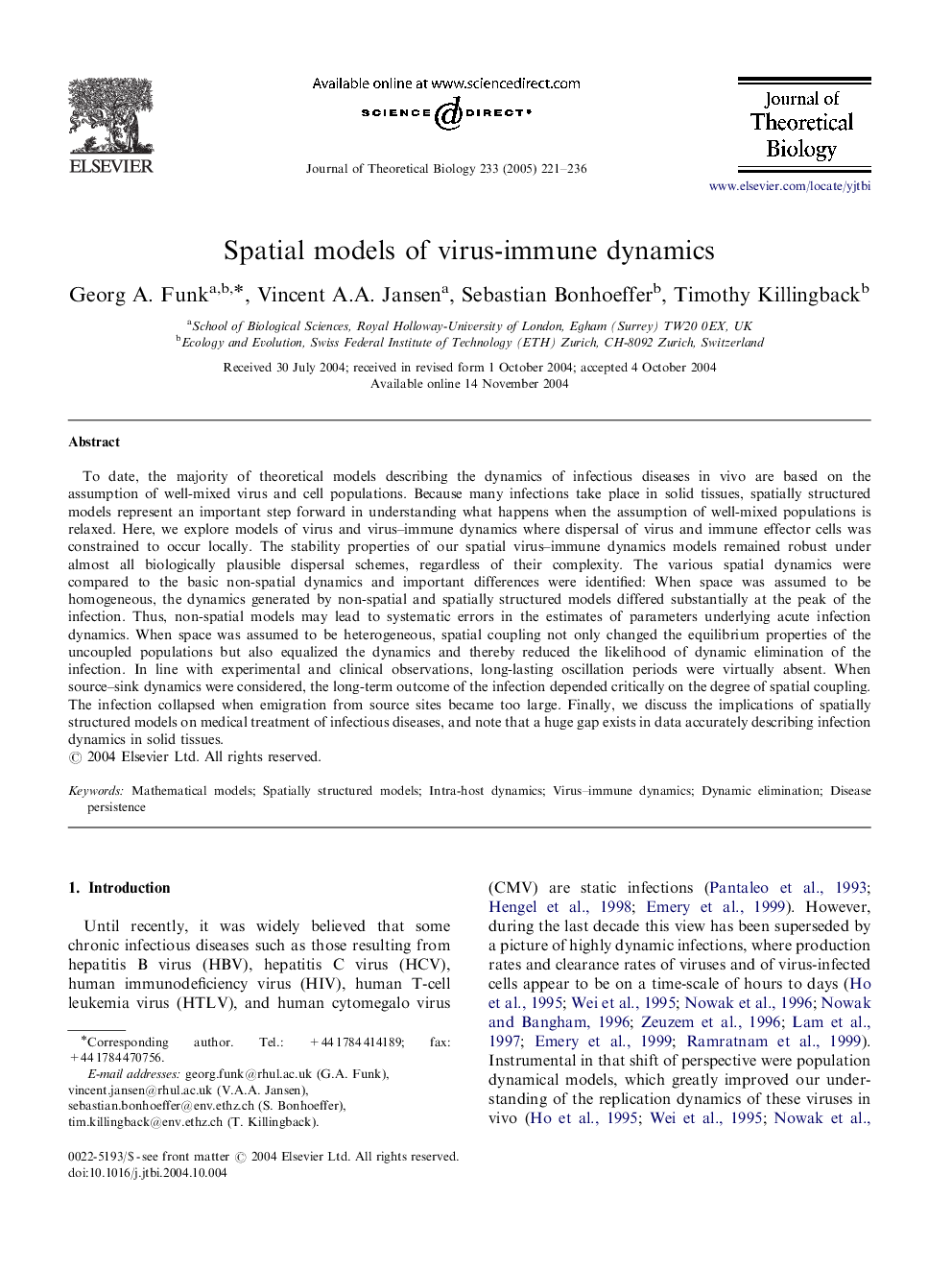| کد مقاله | کد نشریه | سال انتشار | مقاله انگلیسی | نسخه تمام متن |
|---|---|---|---|---|
| 9469814 | 1319065 | 2005 | 16 صفحه PDF | دانلود رایگان |
عنوان انگلیسی مقاله ISI
Spatial models of virus-immune dynamics
دانلود مقاله + سفارش ترجمه
دانلود مقاله ISI انگلیسی
رایگان برای ایرانیان
موضوعات مرتبط
علوم زیستی و بیوفناوری
علوم کشاورزی و بیولوژیک
علوم کشاورزی و بیولوژیک (عمومی)
پیش نمایش صفحه اول مقاله

چکیده انگلیسی
To date, the majority of theoretical models describing the dynamics of infectious diseases in vivo are based on the assumption of well-mixed virus and cell populations. Because many infections take place in solid tissues, spatially structured models represent an important step forward in understanding what happens when the assumption of well-mixed populations is relaxed. Here, we explore models of virus and virus-immune dynamics where dispersal of virus and immune effector cells was constrained to occur locally. The stability properties of our spatial virus-immune dynamics models remained robust under almost all biologically plausible dispersal schemes, regardless of their complexity. The various spatial dynamics were compared to the basic non-spatial dynamics and important differences were identified: When space was assumed to be homogeneous, the dynamics generated by non-spatial and spatially structured models differed substantially at the peak of the infection. Thus, non-spatial models may lead to systematic errors in the estimates of parameters underlying acute infection dynamics. When space was assumed to be heterogeneous, spatial coupling not only changed the equilibrium properties of the uncoupled populations but also equalized the dynamics and thereby reduced the likelihood of dynamic elimination of the infection. In line with experimental and clinical observations, long-lasting oscillation periods were virtually absent. When source-sink dynamics were considered, the long-term outcome of the infection depended critically on the degree of spatial coupling. The infection collapsed when emigration from source sites became too large. Finally, we discuss the implications of spatially structured models on medical treatment of infectious diseases, and note that a huge gap exists in data accurately describing infection dynamics in solid tissues.
ناشر
Database: Elsevier - ScienceDirect (ساینس دایرکت)
Journal: Journal of Theoretical Biology - Volume 233, Issue 2, 21 March 2005, Pages 221-236
Journal: Journal of Theoretical Biology - Volume 233, Issue 2, 21 March 2005, Pages 221-236
نویسندگان
Georg A. Funk, Vincent A.A. Jansen, Sebastian Bonhoeffer, Timothy Killingback,